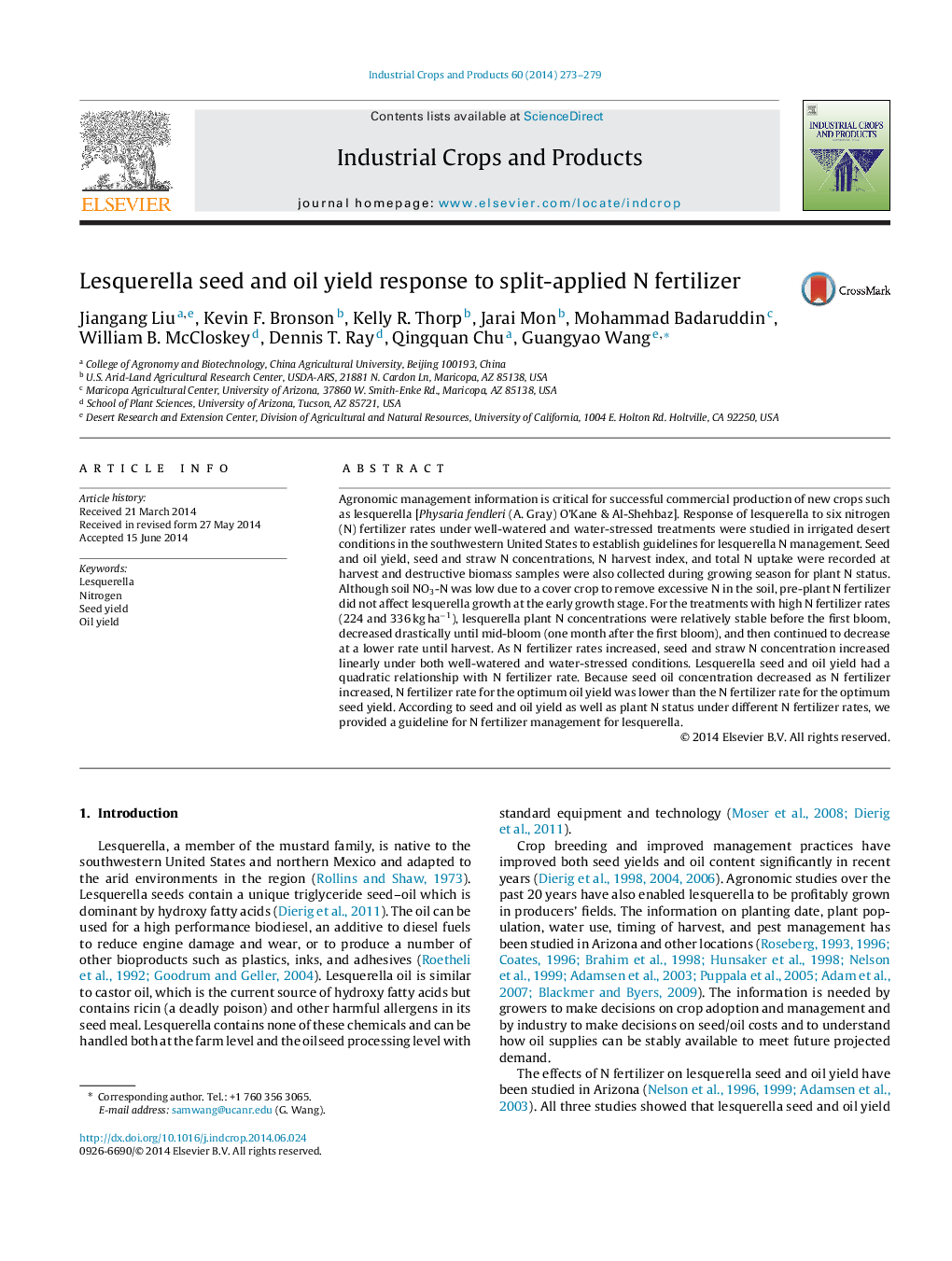| Article ID | Journal | Published Year | Pages | File Type |
|---|---|---|---|---|
| 6376282 | Industrial Crops and Products | 2014 | 7 Pages |
Abstract
Agronomic management information is critical for successful commercial production of new crops such as lesquerella [Physaria fendleri (A. Gray) O'Kane & Al-Shehbaz]. Response of lesquerella to six nitrogen (N) fertilizer rates under well-watered and water-stressed treatments were studied in irrigated desert conditions in the southwestern United States to establish guidelines for lesquerella N management. Seed and oil yield, seed and straw N concentrations, N harvest index, and total N uptake were recorded at harvest and destructive biomass samples were also collected during growing season for plant N status. Although soil NO3-N was low due to a cover crop to remove excessive N in the soil, pre-plant N fertilizer did not affect lesquerella growth at the early growth stage. For the treatments with high N fertilizer rates (224 and 336 kg haâ1), lesquerella plant N concentrations were relatively stable before the first bloom, decreased drastically until mid-bloom (one month after the first bloom), and then continued to decrease at a lower rate until harvest. As N fertilizer rates increased, seed and straw N concentration increased linearly under both well-watered and water-stressed conditions. Lesquerella seed and oil yield had a quadratic relationship with N fertilizer rate. Because seed oil concentration decreased as N fertilizer increased, N fertilizer rate for the optimum oil yield was lower than the N fertilizer rate for the optimum seed yield. According to seed and oil yield as well as plant N status under different N fertilizer rates, we provided a guideline for N fertilizer management for lesquerella.
Related Topics
Life Sciences
Agricultural and Biological Sciences
Agronomy and Crop Science
Authors
Jiangang Liu, Kevin F. Bronson, Kelly R. Thorp, Jarai Mon, Mohammad Badaruddin, William B. McCloskey, Dennis T. Ray, Qingquan Chu, Guangyao Wang,
